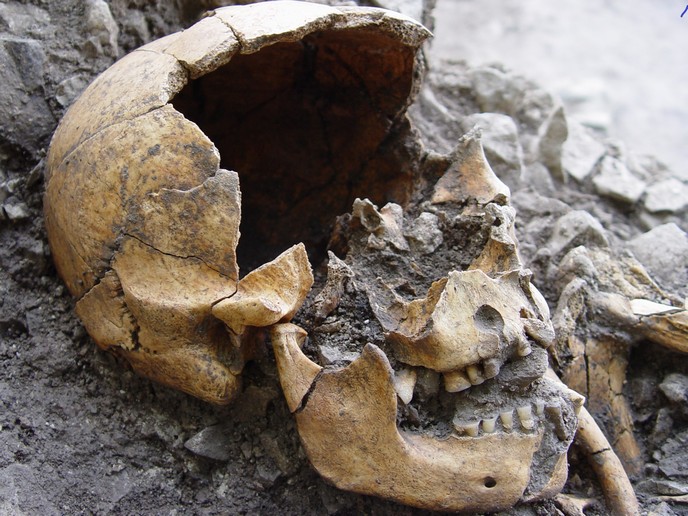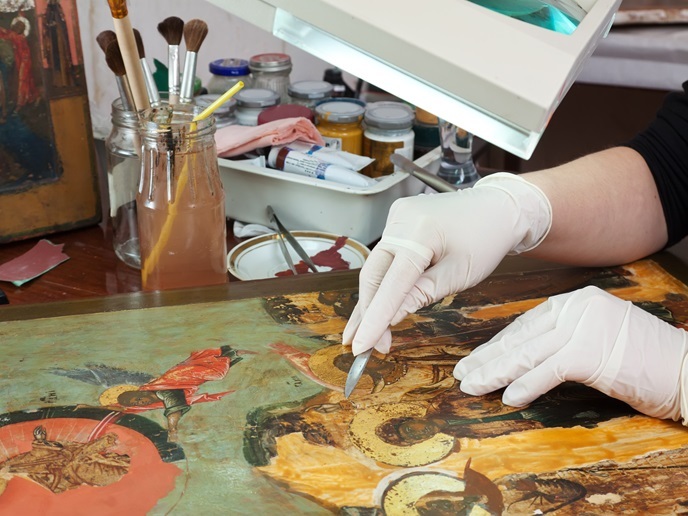Our Palaeolithic ancestors did not eat a ‘Paleo’ diet
The so-called Paleo diet, one of the most widely searched diets on the internet, is based on foods similar to what scientists have long thought were eaten during the Palaeolithic era. According to this commonly accepted notion, the diet of prehistoric hunters and gatherers consisted primarily of animal protein and fat with limited grains and legumes before farming emerged approximately 10 500 years ago. The pioneering EU-funded HIDDEN FOODS(opens in new window) project has provided the first unambiguous evidence that wild cereal-type grains and other kinds of edible plants played an important role in the original ‘Paleo’ diet of prehistoric hunter gatherers in Italy and the Balkans.
Starch granules and the hunt for the diet of the hunter gatherers
Until recently, the prehistoric hunter-gatherer diet was primarily studied with protein-sensitive methodologies. Whether prehistoric hunter-gatherer dietary habits included plant foods was unknown, largely because plant food remains rarely survive in early prehistoric contexts. HIDDEN FOODS turned to starch granules to find clues. Starch is the main store of carbohydrates and energy in plants. It can be preserved in the sediment and on ancient tools like ground stones used for plant food processing. Further, starch granules from food can remain trapped in hardened dental plaque (dental calculus) and survive for millennia. Their identification provides a reliable line of evidence linked to the deliberate consumption of plant foods.
The true ‘Paleo’ diet of the late Palaeolithic period
The recovery of plant food ancient DNA residues from tool surfaces and dental calculus was one of the most exciting results. “Advanced DNA extraction techniques and next-generation sequencing of ancient DNA preserved in the dental calculus dating back over 15 000 years showed that hunter-gatherer communities were collecting and consuming plant foodstuffs for nutritional or medical purposes for several millennia before the introduction of domesticated cereals,” explains Emanuela Cristiani of Sapienza University of Rome and its Diet and Ancient Technology Laboratory(opens in new window) (DANTE) and HIDDEN FOODS coordinator. Ancient DNA analysis also enabled the reconstruction of the oral flora evolution of prehistoric hunter-gatherers and of the first groups of farmers who arrived from the Near East, thus outlining the stages that marked the transition to agriculture in Southern Europe.
Carbohydrate consumption: ethnography and evolution
Before the HIDDEN FOODS project, knowledge about the use of plants in hunter-gatherer societies of southern Europe was quite elusive. By revealing the role of starchy plant foods in the diet of prehistoric hunter gatherers of Italy and the Balkans, HIDDEN FOODS shed light on more than plant processing and consumption. Low-carbohydrate diets increase risk of death from any cause(opens in new window). HIDDEN FOODS supports revisiting the ‘Paleo’ diet. Carbohydrates might also have fuelled human cortical development and brain growth. Moreover, the need for mechanical processing or heat treatment of some plants to unlock their energy and aid digestion may have led to technological innovations such as stone tools and food cooking. Finally, “the analysis of dental calculus showed the strong relationship between food and medicine and could point to ancient medical remedies supporting a return to traditional medicine,” adds Cristiani. HIDDEN FOODS has fundamentally changed our understanding of prehistoric hunter-gatherers, and the project’s tools and techniques will continue to yield fruit in numerous areas.







